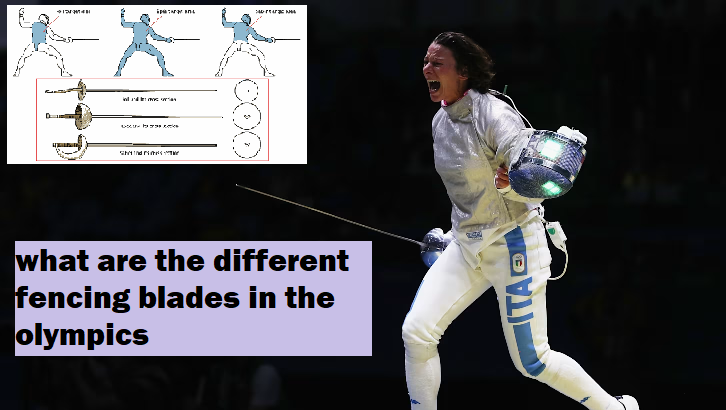Fencing is a sport steeped in tradition and skill, with various weapons and styles competing at the Olympic level. Understanding what are the different fencing blades in the Olympics is essential for grasping the nuances of this exciting sport.
Types of Olympic Fencing Blades
There are three main types of blades used in Olympic fencing, each associated with a specific discipline:
- Foil:
- The foil blade is lightweight and flexible, typically weighing around 500 grams. It is primarily used for thrusting and has a blunted tip. The target area is the torso, and touches are scored with the tip of the blade. The foil is known for its speed and agility, making it a favorite for many fencers.
- Épée:
- The épée is the heaviest of the three blades, weighing about 750 grams. Unlike the foil, the entire body is a valid target area, allowing for more tactical play. Épée fencers score points with the tip of the blade, and the weapon’s heavier weight can make for slower but more powerful attacks.
- Saber:
- The saber blade is also lightweight, weighing around 500 grams, but differs in that it allows both cutting and thrusting actions. The target area includes everything above the waist, and its design promotes quick, aggressive movements.
The Role of Blades in Fencing
The weakest part of a fencing blade is typically the tip, which is designed to be blunt to prevent injuries. However, it must be strong enough to withstand the rigors of competitive fencing.
Fencers often wear white uniforms, known as “lamés,” to signify purity and to highlight any scoring hits. They also wear wires for electronic scoring systems that detect touches, enhancing the fairness and accuracy of the sport.
Types of Fencing in the Olympics
There are three types of fencing in the Olympics: foil, épée, and saber. Each has its unique rules, strategies, and styles, contributing to the sport’s diversity.
Is Fencing an Expensive Sport?
Fencing can be considered a relatively expensive sport due to the cost of equipment, including blades, masks, jackets, and protective gear. However, prices can vary depending on the quality and brand of the equipment.
Global Fencing Rankings
Countries like Italy, France, and the United States have historically excelled in fencing, producing some of the best fencers in the world. The best female fencer in the world is often considered to be a title that changes hands frequently, with athletes from various countries competing for the top spot.
Skill Levels and Styles
Fencing can be complex, and while some may argue that épée is easier than foil, opinions vary. Foil is often seen as more technical, while épée allows for a more straightforward approach to scoring.
Popularity and Culture of Fencing
Fencing is a unisex sport, welcoming participants of all genders. It is also considered a “classy” sport due to its historical roots and the elegance displayed in competition.
Fencing Facts and Trivia
- Fencers often scream or shout after winning to express their excitement and release adrenaline.
- The ideal age to start fencing is generally between 8 and 12 years, although people of all ages can learn and compete.
- Fencing has its origins in Europe, with historical references dating back to the 15th century.
Conclusion
Fencing is a multifaceted sport with various blades, styles, and strategies. Understanding what are the different fencing blades in the Olympics enhances appreciation for the skill and artistry involved. Whether you are an aspiring fencer or a fan, the elegance and intensity of this sport will continue to captivate audiences worldwide.
Read more:
1= https://rapidurlindexer.net/blogs/what-are-the-different-fencing-blades-in-the-olympics/
2= https://rapidurlindexer.net/blogs/what-are-the-7-deadly-sins/
3= https://rapidurlindexer.net/blogs/what-are-the-5-major-love-languages/



